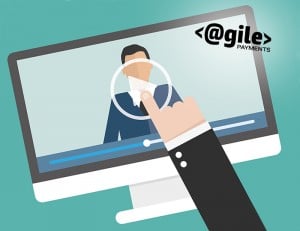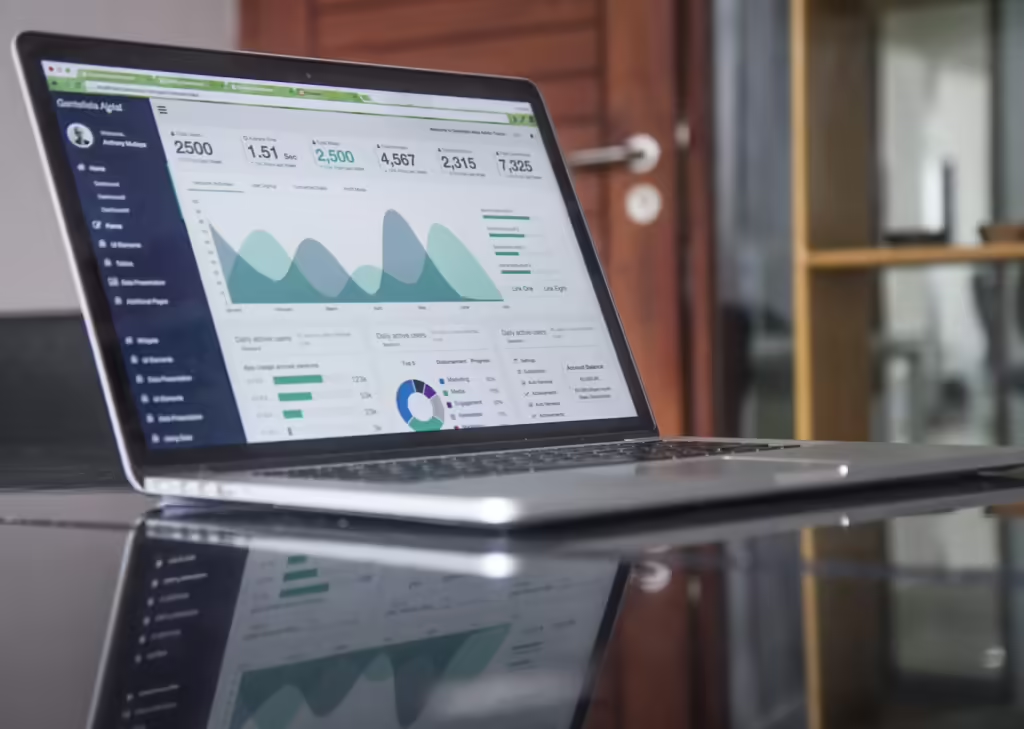Let’s be honest, there’s no such thing as too many users, but there definitely is such a thing as not enough users. So, are you getting enough of them? How are you going about getting them? When you look at a lot of the companies that are offering software as a service, it seems like the majority of them are going about getting users the same way.
 They bait users by offering them a free trial of the software they have, and then they cross their fingers and pray that the user will love their software so much that they’ll eventually pay for the software.
They bait users by offering them a free trial of the software they have, and then they cross their fingers and pray that the user will love their software so much that they’ll eventually pay for the software.
But guess what, this tactic very rarely works.
Successfully marketing your SaaS involves more than just slapping a free trial on it and then hoping for the best from it.
Many try it, but for the most part, it is an epic fail.
SaaS companies have a unique challenge when it comes selling their product. Why? Well, if a customer is looking online to get a T-shirt, they will look at the design on the shirt, they select the size that fits, and they click on the pay now button.
That’s not how it works with software.
Before a person is willing to buy software, or worse yet pay every month for software, they need to be able to play around with it. Just seeing an image of the software’s packaging isn’t enough.
 This does not mean that there are no successful marketing techniques for SaaS companies. It just means that they need to work a little bit harder. They need to baby their customers and nurture their clients.
This does not mean that there are no successful marketing techniques for SaaS companies. It just means that they need to work a little bit harder. They need to baby their customers and nurture their clients.
Why do we say baby them? Well, we are not talking about talking down to the clients or treating potential leads like they are ignorant of how a particular type of software works. Instead, what we are talking about is the way information about the software is delivered to them.
In marketing, this type of campaign is referred to as drip marketing, or drip email marketing. Honestly, we could and probably will write a whole other article explaining what a drip email marketing system looks like. It’s complicated. However, if we were to break it down to its basic parts, it consists of a series of emails that are automatically and systematically sent to a prospective client’s inbox over a designated period of time.

The emails are short, personable, and to the point. The goal of the emails is not necessarily to sell but instead to build a relationship. You want your client to like you, to trust you, and to feel like you have something of value to offer. It involves nurturing the client to the point where they are ready to buy.
You may be thinking that you are already doing this and what you need is more prospective clients that you can include in your drip marketing campaign.
Okay, we understand what you’re saying and are going to take a few minutes to address your concern. Before we talk about what will work, let’s just take a few seconds and address what might not work. What might not work is using a bunch of widgets, pop-up banners, and other tricks to try to get more people on your email focus list. Why? Because a lot of these tricks are directed toward companies that get the majority of their customers from their blog.
You may not have a blog, and quite frankly, you don’t need one to capture leads. What you do need are some of the tips that we are going to talk about now.
Tip Number One: Offer Software Feature Users Can Continue to Use After The Trial Ends

So, let’s say you go the free trial route. How do you prevent your customers from deleting your software once the trial is over? Provide them with something that is free and that they can continue to use. For example, a company that has created software that allows users to create, compile, read, and share PDFs might allow use of all the features of the software for a trial period. Once a trial period is done, why not let them keep the PDF reader feature for free?
Another example of this is a company called Freshbooks. The software has a lot of features, but one of the most prominent features is its ability to make invoices. So they have included a free invoice creator that clients can use. As a result, the product has instant value to the user. As the user continues to make invoices with this free feature, they learn more about the product, the company, and their trust in the company grows. A bonus for Freshbooks is that they are able to collect the email addresses of all of the people who download the software. They can continue to nurture the relationship by providing timely emails. Does this technique work for everyone? No, but it might work for you.
Tip Number Two: Get Personal
One thing that people like more than getting something tangible for free is getting a free useful tip or advice. Just ask any doctor or lawyer how many of their friends are hitting them up for free advice. The company Hubspot has found a way to use this to their advantage. What they have done is create a website grader. It is a little website that allows users to enter the URL of their business website, provide their personal email address, and receive a personalized list of recommendations on things they can do to make the website faster, make it perform better, increase the value of their SEO, and improve their website’s security.
The site is so cool because it allows Hubspot to engage people. And since people are giving their email address in exchange for the ability to use the site, Hubspot can create a drip campaign and encourage people to use their paid service. Overnight a cold lead becomes a paying customer.
Tip Number Three: A Free Webinar
We have all been too bad webinars. They are boring, long, and include a bunch of information we could have found by just visiting the website. That being said, when a webinar is done well, it is one of the most effective ways to convert leads into customers. Why? Because it’s as close as you will ever get to having a face-to-face interaction with a potential prospect.
 A webinar that has value can build a strong relationship. Webinars have been known to convert between 20 to 40 percent of attendees. But leave the sales pitch or the call of action to the end of a webinar. Focus on providing value and connecting to your attendees.
A webinar that has value can build a strong relationship. Webinars have been known to convert between 20 to 40 percent of attendees. But leave the sales pitch or the call of action to the end of a webinar. Focus on providing value and connecting to your attendees.A word of caution, don’t blow your webinar by using it as it opportunity to demo your product. It could be that the person who is visiting your webinar is not overly interested in your product, yet. Your goal should be to highlight the problem the software solves. Help them see why solving said problem is so important.
The company LeadPages is the unquestioned king of the webinar. In just one year they had more than 200 webinars. During the webinars, they actually teach you something that is worth looking at without trying to sell anything until the very end.
Tip Number Four: If You Teach Them, They Will Buy
People are hungry for knowledge. Proof of this is seen by the plethora of videos on sites like YouTube that are dedicated to solely providing instruction. People eat this stuff up.

You can achieve this goal by sending them an e-book, giving them a free video, or offering any other method that transmits something of value free to help potential clients achieve a quantifiable goal. Once people download your video course e-book, work them into your system of drip emails.
Remember, each one of the emails that you send must provide a ton of value. Interestingly, if you do it right, the emails themselves can actually become a free bonus. How? Well, in email number one you can begin explaining a particular process and continue explaining the process in subsequent emails. They all tie into each other, and they all teach something valuable over the course of a few days or a few weeks.
Tip Number Five: Give Them Something Free
 This is the easiest way to get people to give you their email address. Find something that you know your target audience is going to want to download. It might be an e-book, a cheat sheet, a video, or something offered to them in exchange for their email. The company WP Curve provides a list of tools that users can download free once they enter their email address.
This is the easiest way to get people to give you their email address. Find something that you know your target audience is going to want to download. It might be an e-book, a cheat sheet, a video, or something offered to them in exchange for their email. The company WP Curve provides a list of tools that users can download free once they enter their email address.
Other sites like Bidsketch don’t ask people who end up on their landing page if they want a free trial of their software. Instead, they simply tell them to enter their email if they want a free sample proposal. Now they have the emails they need to send a drip campaign that will nurture their clients for the next 30 days.
Tip Number Six: Create a Resource Library
After a few months of offering cheat sheets, video courses, spreadsheets, e-books, and webinars to your clients, you’re going to have a lot of valuable material that you have created. It can be difficult for a potential client to find all of this information on their own.
So make a library where potential clients who become members by giving you their email address can go to get instant access to all of the free information you’ve produced. This makes being a member a bonus and drastically improves the experience that your subscribers have.
A good example of this is the way that Kissmetrics has taken the 32 marketing guides they have made over the past few years and compiled them into a library that members can access for free.
In Conclusion
It might have seemed like some of these ideas were a little repetitive. That’s because regardless of the technique you use, in order for it to be effective you must offer your clients something of value, garner their trust, and create a lasting relationship. This is the only way that a drip campaign is going to work.
People do not like feeling like someone is trying to sell them something. Just think of how you reacted the last time you got a phone call from a telemarketer. You probably hung up.
When you offer people something for free, whether it be a e-book, a piece of fully functioning software, or a specialized piece of training, it encourages people to trust you, listen to you, and want to do business with you in the future.





